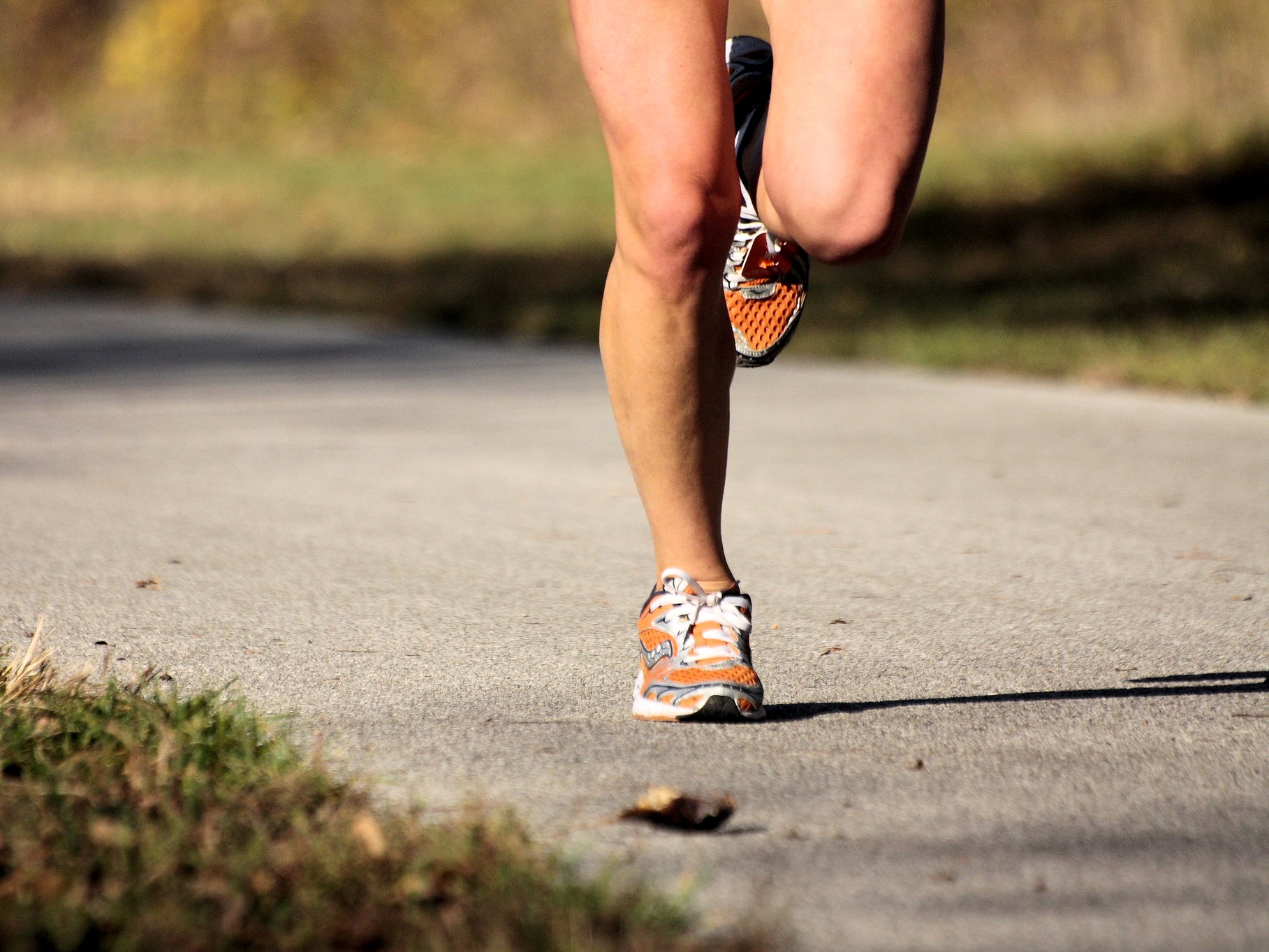Last updated on January 20th, 2023 at 10:44 am
Running is freedom. While timing splits and concentrating on your pace, getting out into nature is a bonus. However, the last thing you want to sap your focus are pressure points slowly turning into blisters on your heels and forefoot. Not to mention the pain and suffering that go along with it. We’ll show you how to prevent blisters from running so you can focus on your pace instead of pain.
What Causes Blisters While Running
Blisters are a runner’s nemesis, and their cause is simple science.
Friction is the enemy. Whether it’s skin against skin, skin against sock, or skin against shoe, blisters slow you down.
With the constant friction associated with the foot-to-ground motion, the body’s natural defense mechanism kicks in.
First, the constant rubbing on a pressure point eventually rubs your skin raw. Subsequently, your body gradually forms a bubble of serum as a barrier to protect the raw flesh underneath from bacteria while it heals.
There are multiple causes for the friction associated with blisters, but for runners, the most common issues are:
- Tight shoes rubbing on pressure points
- Sock seams rubbing against your toes
- Feet slipping too much inside the shoe
- Excessive pressure on the heels, toes, or soles
- Broken or smashed heel cups rubbing on heels
- Sweaty or wet feet
In fact, any one of the above instances will turn your favorite pass time into a prime opportunity for these nasty and often painful bubbles to form.
How to Treat Blisters After Running
Any runner can attest that blisters are painful and annoying. Plus, when the fluid (serum) builds up, it creates an underlying pressure that can cause a great deal of discomfort. Especially if exposed to further friction and tearing at the skin.
Sometimes, so much fluid builds that the skin just ruptures, especially during extremely long runs. So if it’s too late for learning how to prevent blisters from running, it may be time to treat them afterward.
There’s much debate over whether or not to drain your blisters, but sometimes there’s just no choice.
In fact, I’d be lying if I said I don’t get excited to pop and peel a blister. However, blisters are there to protect your skin from harmful bacteria. So, if I know I’ll be running through stagnant puddles or a stream, I have to force myself to refrain from the pop.
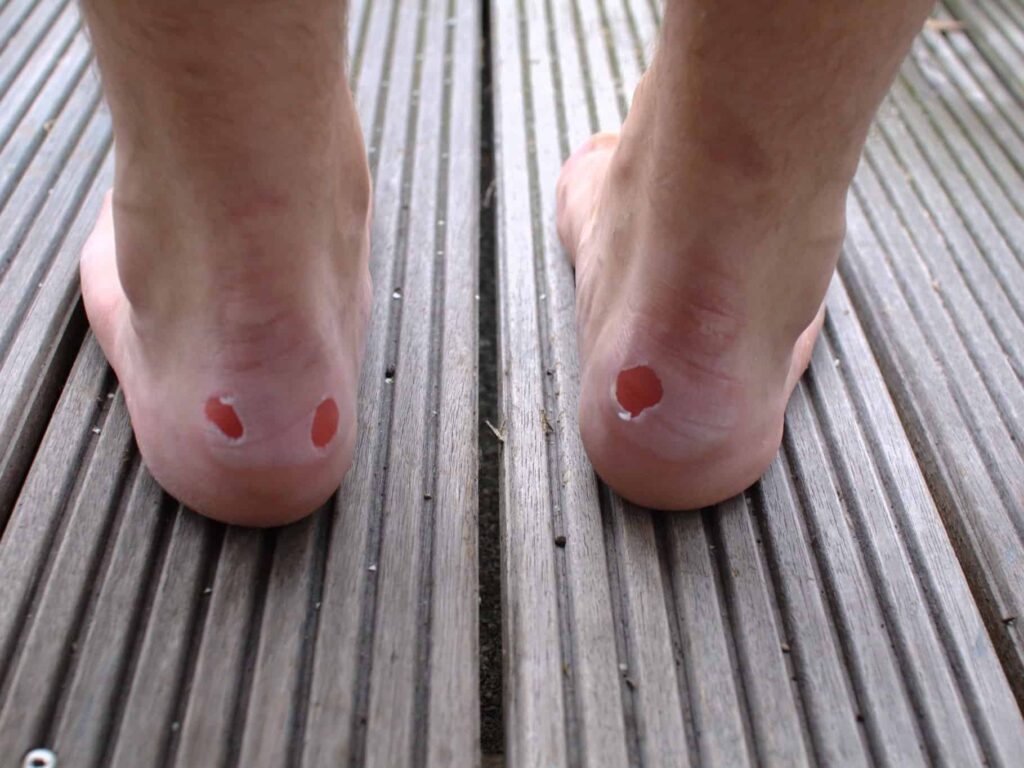
However, if you must drain, then make sure you do it correctly.
- Clean the area over and around the blister with an antiseptic like isopropyl alcohol or iodine.
- Sterilize a needle by immersing it in rubbing alcohol or boiling it in water for 30 minutes.
- Then, slowly drill through the blister at its edge parallel to the skin. This is so you don’t scrape or poke the raw flesh underneath the fluid.
- Allow the blister to drain, you can use sterile gauze or a cotton ball to press into the blister directing the flow toward your needle hole. You may have to exert minor pressure to assist with fluid removal.
- Finally, dab some antibiotic ointment, like Neosporin, over the area and cover with a bandage.
If you develop blisters during a longer competitive race, you can seek medical attention at an Aid Station.
Additionally, if you want to avoid popping a blister, you can add moleskin with a hole in the center.
This will reduce the friction by transferring the pressure to the moleskin.
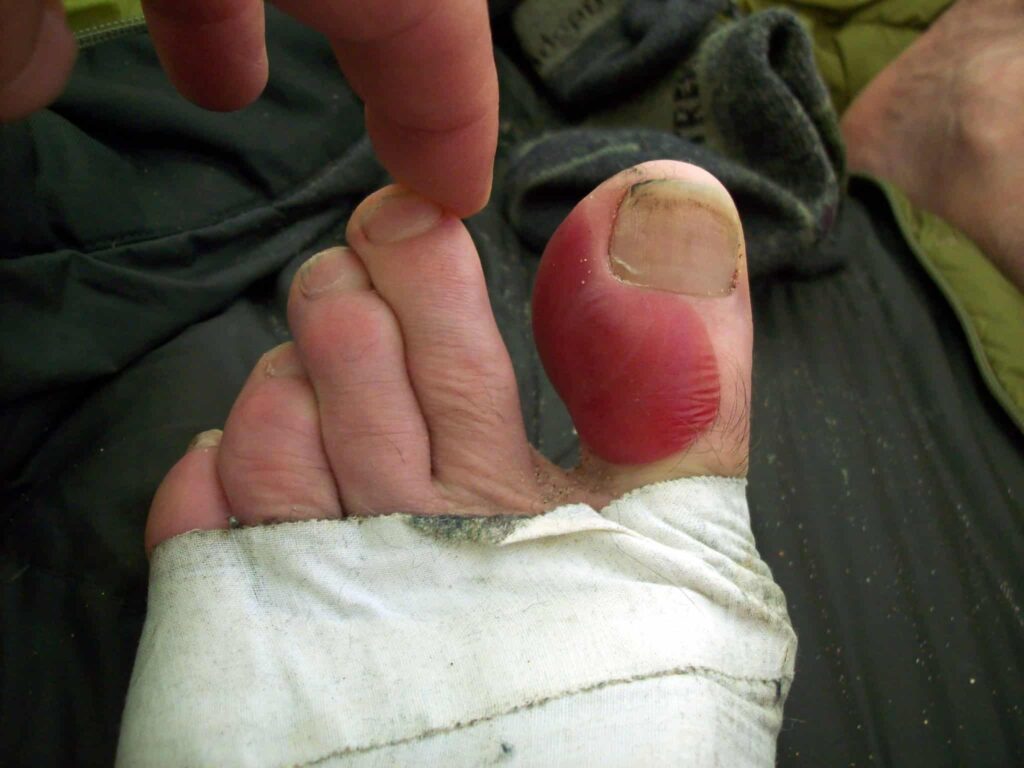
How to Prevent Blisters Before Running
Ultimately, the best thing you can do is prevent blisters from occurring altogether. In fact, there are several things you can do to protect your feet and keep blisters at bay. Here’s how to prevent blisters from running:
1. Keep Moisture Out
First things first, keep your feet dry. Wet feet are a runner’s worst nightmare. The moisture creates extra friction making your feet more prone to blisters. Furthermore, moisture softens the skin and creates a prime environment for cuts.
The most important thing you can do is ensure you are wearing moisture-wicking socks. Some runners even advocate wearing two pairs of socks, while other runners suggest bringing an extra pair.
Additionally, sprinkling powder on your feet or in your shoes can help alleviate moisture buildup. Common powders that runners use include
- Talc-free baby powder
- Cornstarch
- Commercial products like Gold Bond or Anti Monkey Butt Powder
Once upon a time, an old military hack was to use heavy-duty antiperspirants on feet to prevent trench foot. However, in today’s modern world there are actually antiperspirants specially designed for the feet.
A popular choice in the running community is Neat Feat’s 3B Foot Saver Roll-On Antiperspirant.
2. Ditch the Cotton Socks
Additionally, socks are arguably the most important piece of attire for runners. And any avid runner will tell you to ditch the cotton.
In fact, cotton is the worst thing to wear for an active lifestyle because it retains moisture and encourages chafing, swelling, and blisters.
Instead, opt for synthetic materials like polyester, nylon, or merino wool because they are best at wicking moisture.
Many runners even recommend seamless socks. In fact, those annoying seams can be excruciatingly painful and also contribute to blisters around your toes.
Overall, brands like Swiftwick, Smartwool, and Balega seem to be the crowd favorites.
Finally, taller socks will help keep leg sweat, puddle splashes and rain from entering your shoes and promoting blisters.
3. Wear an Extra Pair of Socks
Alternatively, some runners prefer wearing two pairs of socks. The idea is that the friction caused by running will occur from sock-to-sock instead of foot-to-sock.
In fact, this helps reduce the burn on some of those high pressure-point areas.
When doubling up on socks, it’s sometimes necessary to upgrade the size of your shoes to prevent them from becoming too tight.
However, this is something you’ll need to experiment with before a major run, as it doesn’t work well for everyone.
4. Proper Fitting Shoes
Furthermore, another major factor in the prevention of blisters is proper fitting shoes.
In fact, if your shoes are too tight, it increases both the pressure and friction on your feet.
On the other hand, if they are too loose, slipping also increases your chances of blisters.
A properly fitted shoe shouldn’t allow your heel to slip, nor should your toes rub against the front. When trying on shoes, you should have at least a finger’s width between the tip of your toes and the front of the shoe.
Additionally, pay attention to any sewn seams within the shoe, particularly around the toe area.
In fact, those reinforcements are notorious for grinding pinky toes, bunions and causing toes to crunch under each other.
When those seam edges start rubbing against your feet or toes, they can be downright crippling and it’s a perfect environment for blisters and chafing.
Also, it’s a good idea to wear your running socks when trying on new shoes.
Moreover, many long-distance runners upgrade their shoe size by a half or whole step to allow for swelling. Others use heat-molded inserts to properly cradle the foot which helps cut down on friction.
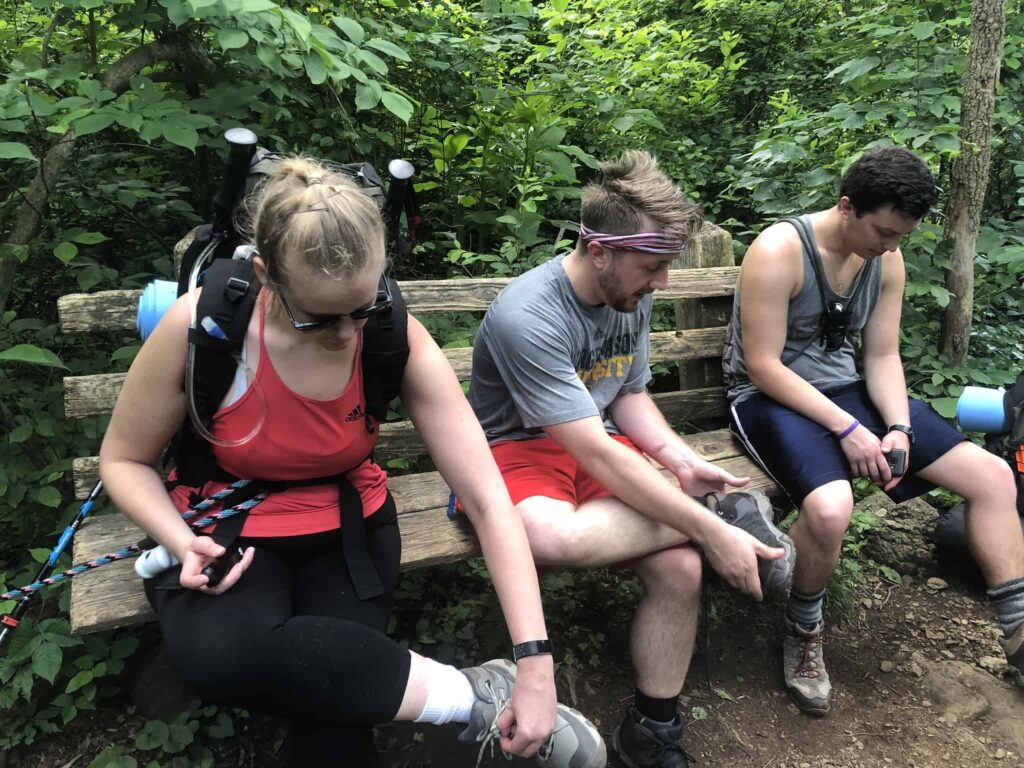
5. Switch Up Your Laces
Lots of runners wonder how to prevent blisters from running before they enter a marathon or head out on a long trek. Another great tool for blister prevention is changing your lacing pattern.
For instance, if you’re prone to blisters in certain areas, there are a number of shoelacing patterns that can help alleviate pressure on certain areas of the foot.
For example, you can try the “heel lock” if you’re prone to heel blisters from slippage. Lacing your shoes with this pattern reduces the girth around the heel decreasing the slippage, which in turn decreases friction.
Other lacing patterns for problem areas include:
- Top of the foot. If you experience uncomfortable rubbing or hot spots on top of your foot, try the “Lydiard” or parallel lacing pattern.
- Toe pain. If your experience blisters around your toes, try a combination of parallel and criss-cross lacing, or toe-box relief lacing.
- Wide or narrow feet. If you have wide feet and experience increased friction on the inside or outside of your foot, try a modified criss-cross lacing pattern. On the other hand, if you have narrow feet, you can try the narrow-foot lock lacking.
- Flat feet or high arches. Some runners with high arches experience pain and discomfort where the peak of your instep meets your shoe. If this is you, try gap lacing. Conversely, if you have flat feet that blister easily, try midfoot lock lacing.
6. Build Up Calluses
Ultimately, with time and experience, your body naturally builds up calluses to pad those areas of high pressure you experience through running.
And it’s crucial that you leave your calluses alone, as they serve to prevent future blisters in the area.
However, there are occasions when they become too big and inevitably create more pain than comfort. In this case, lightly file them with a callus file or pumice stone. But only enough to alleviate the unnecessary pressure.
If your calluses begin drying and cracking, then be sure to moisturize your feet routinely with quality foot cream.
In fact, learning to protect your feet is the best way to prevent blisters.
7. Tape Pressure Points
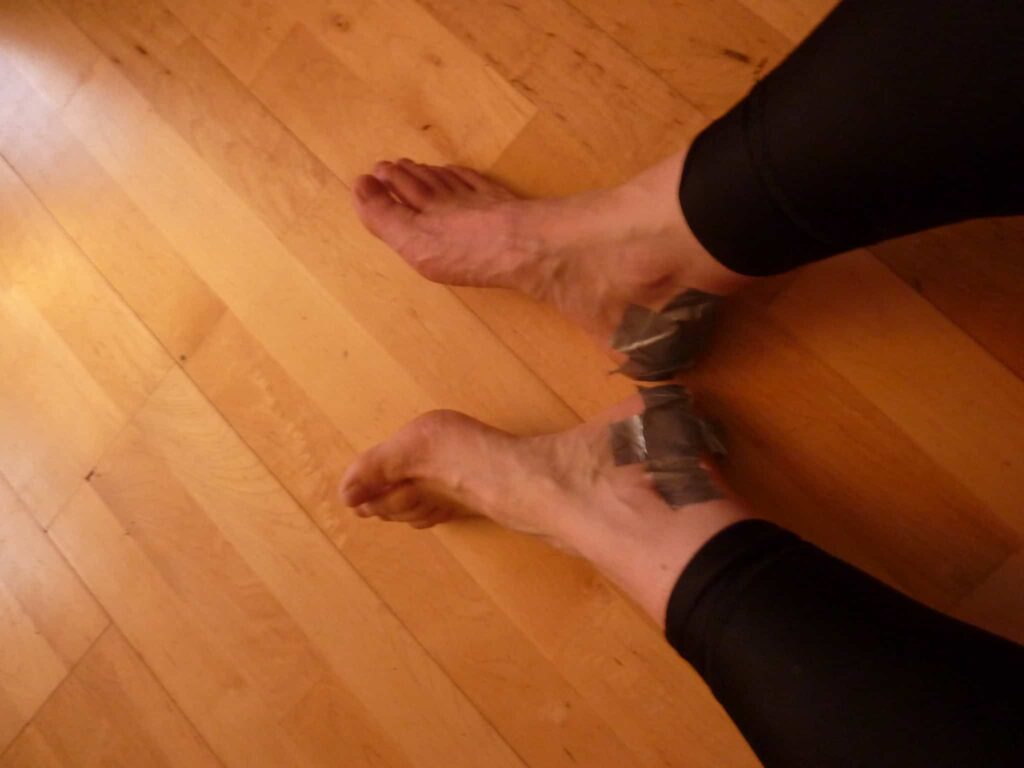
In addition, another popular deterrent, many athletes get in the habit of taping sensitive areas prior to a run. There are all kinds of products on the market that can help you accomplish this.
Runners can easily dress feet in leukotape, moleskin dressing, or blister prevention tape before heading out. This will protect the skin by creating a barrier between your foot and the source of friction.
In a bind, masking tape, painter’s tape, duct tape or even band aids will work. Particularly with duct tape, however, exercise a great deal of caution in its removal. Otherwise, you could remove a layer of skin right along with it.
In fact, I am one of these people, and I keep a box of band aids in the car for emergency padding and taping against blisters for both running and dress shoes. Additionally, if it’s going to be a particularly long or wet run, I cover the band aids with aa little leukotape.
8. Foam or Gel Inserts
Additionally, if you find your foot slipping too much, you can always try using foam or gel inserts. These help your shoe fit more snug reducing the amount of friction and slipping. Additionally, foam or gel also provide sufficient padding to absorb the shock as your foot strikes the ground.
However, avoid the plastic inserts because they actually cause more slippage and rub against the side of your foot.
9. Blister Balms
Much like tape and powders, blister balms are also great preventative maintenance. In fact, there are plenty of products on the market to lubricate sensitive areas in order to reduce friction. When it comes to how to prevent blisters from running, we prefer starting with a lubricant like Foot Glide.
Some options include:
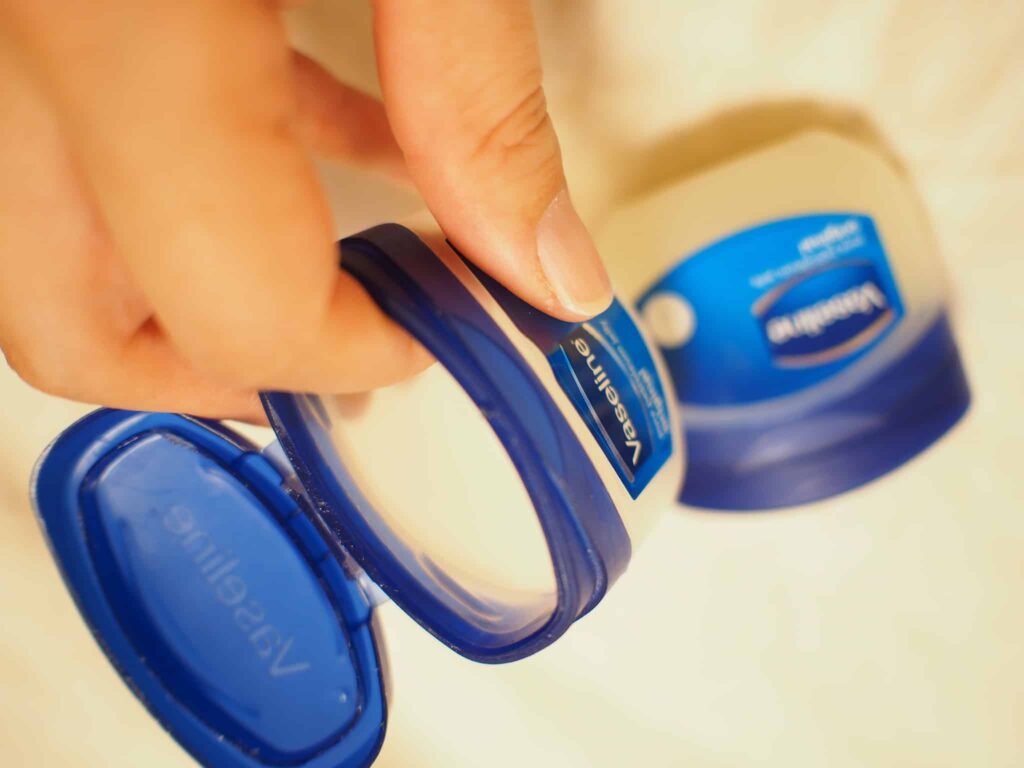
10. Run with a Blister Kit
Lastly, it’s always best to run prepared, especially for distance runs. So, throw a blister kit in your runner’s belt and always prepared to deal with those friction points as they arise.
You don’t need copious amounts. However, small portions of the following items can sure come in handy when you’re feeling to beginnings of a blister.
- Moleskin
- Bandages
- Tape
- Powder
- Lubricant
- Antiseptic pads
Having a blister kit allows you to pause mid-run, apply first-aid treatment, then continue on your way.
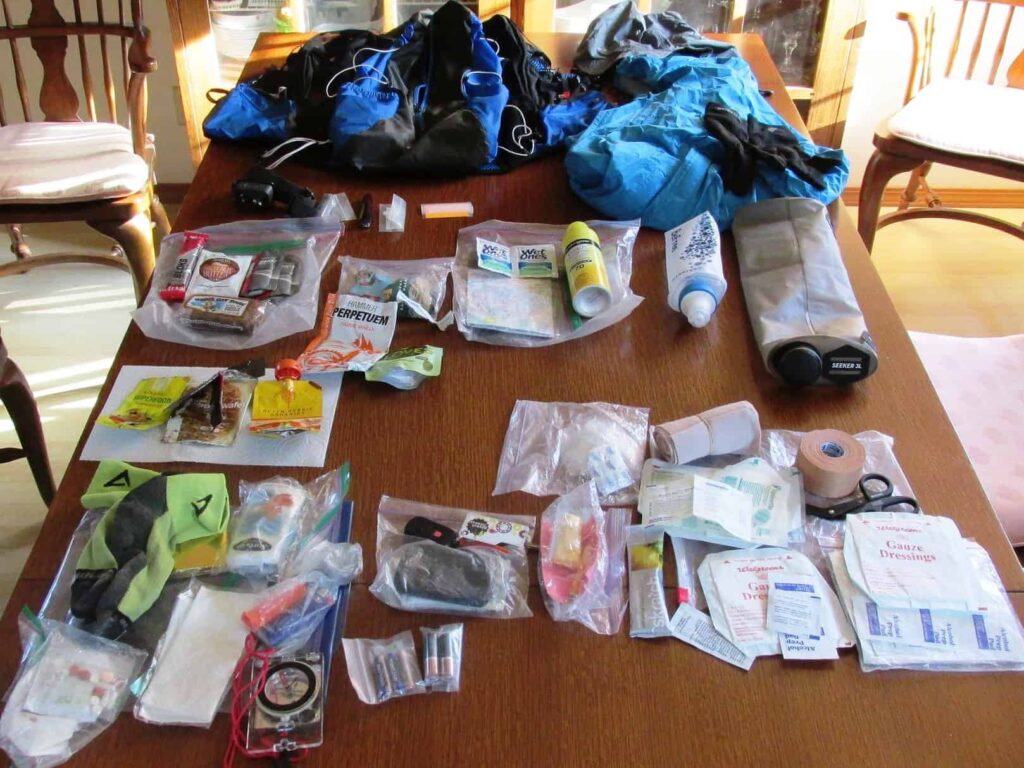
Run Happy
Your feet are the foundation to your running. Take care of them, and they’ll take care of you. Caring for them properly ensures that you won’t have to sit on the sidelines.
Preventative maintenance is always the best measure. However, being prepared for the unexpected is equally important. When you do both, blisters won’t ruin your concentration or sideline you during training. As a result, you’ll have the freedom to focus on your time splits and pacing. So, now that you know how to prevent blisters from running, you’re well on your way to better comfort.
RELATED POSTS:
- 6 Best Running Shoes for Achilles Tendonitis
- Best Running Shoes for Peroneal Tendonitis
- Best Running Shoes for Sciatica Pain
- 6 Benefits of Alkaline Water for Runners
- Best Zero Drop Trail Running Shoes
- GPS Watches With The Longest Battery Life
- Best Running Hat for Hot Weather
- Best Hydration Vests for Trail Running and Ultrarunning
Title Image Credit, How to Prevent Blisters from Running: Phil Roeder | (source) | Attribution 2.0 Generic (CC BY 2.0) — reduced file size and image
How to Prevent Blisters from Running, Image Credit 1: gromgull | (source) | Attribution-ShareAlike 2.0 Generic (CC BY-SA 2.0) — reduced file size and image
How to Prevent Blisters from Running, Image Credit 2: summonedbyfells | (source) | Attribution 2.0 Generic (CC BY 2.0) — reduced file size and image
Image Credit 3, How to Prevent Blisters from Running: Virginia State Parks | (source) | Attribution 2.0 Generic (CC BY 2.0) — reduced file size and image
Image Credit 4, How to Prevent Blisters from Running: kcxd | (source) | Attribution 2.0 Generic (CC BY 2.0) — reduced file size and image
How to Prevent Blisters from Running, Image Credit 5: akiko yanagawa| (source) | Attribution-ShareAlike 2.0 Generic (CC BY-SA 2.0) — reduced file size and image
How to Prevent Blisters from Running, Image Credit 6: brewbooks| (source) | Attribution-ShareAlike 2.0 Generic (CC BY-SA 2.0) — reduced file size and image

